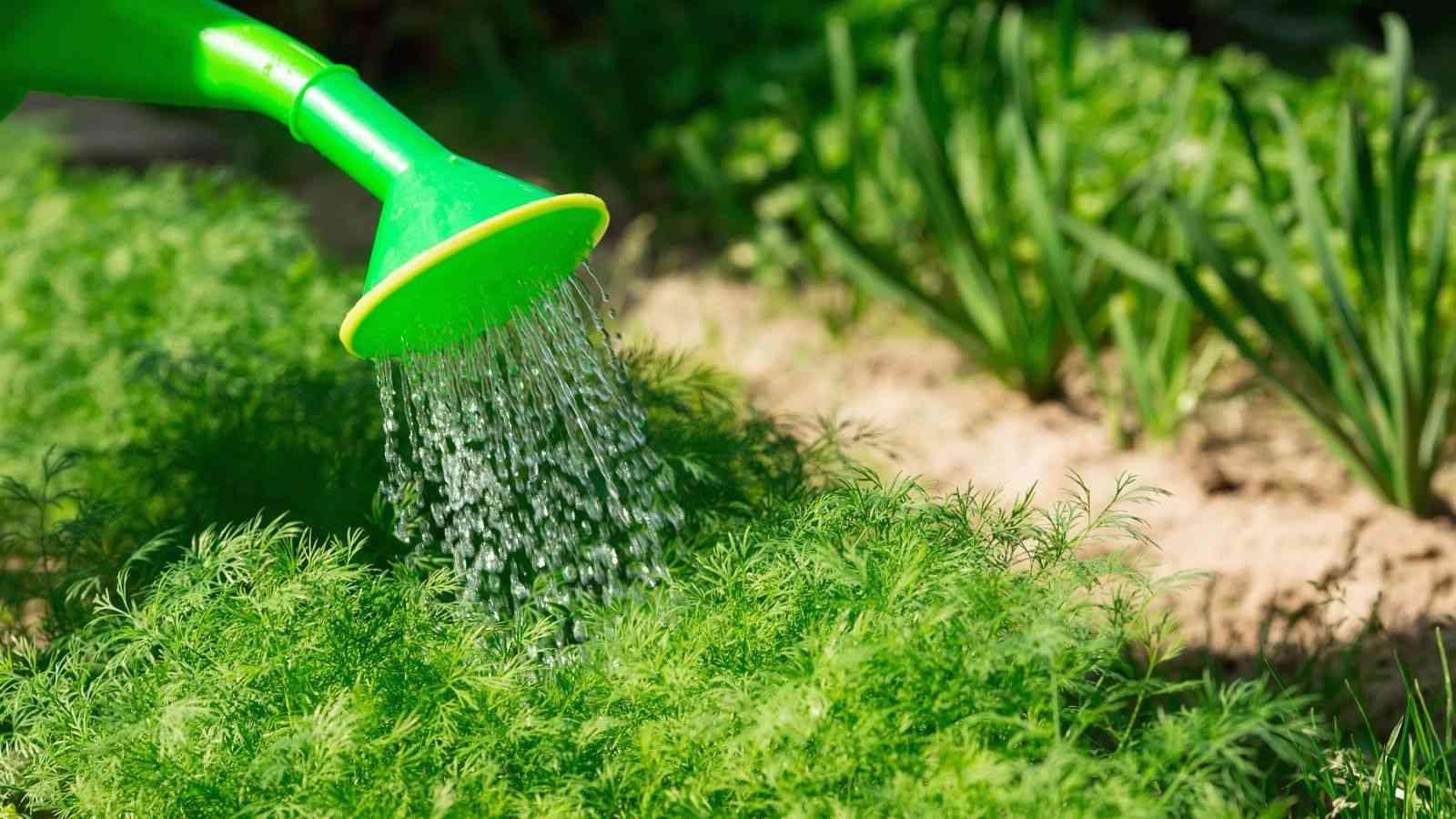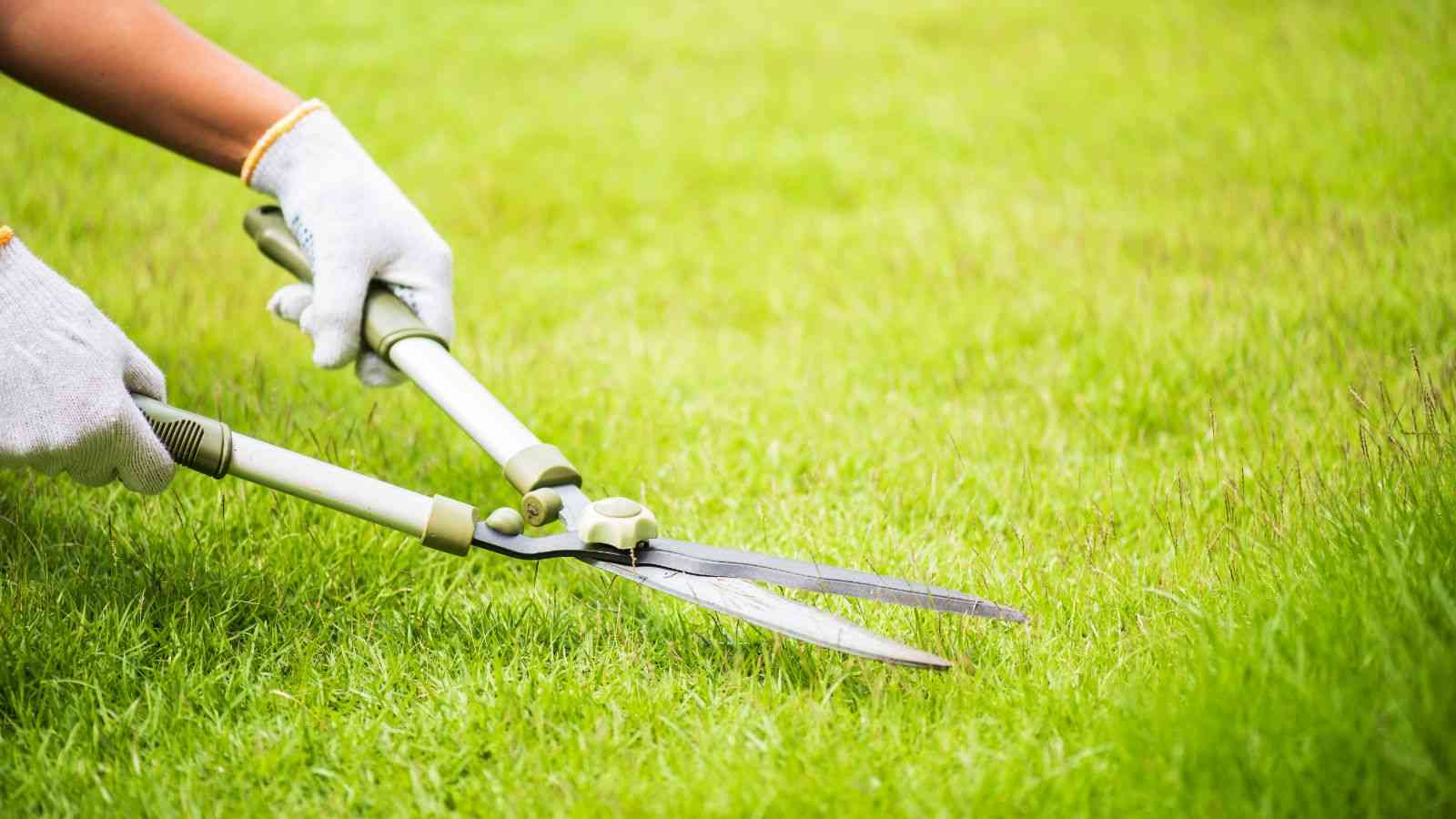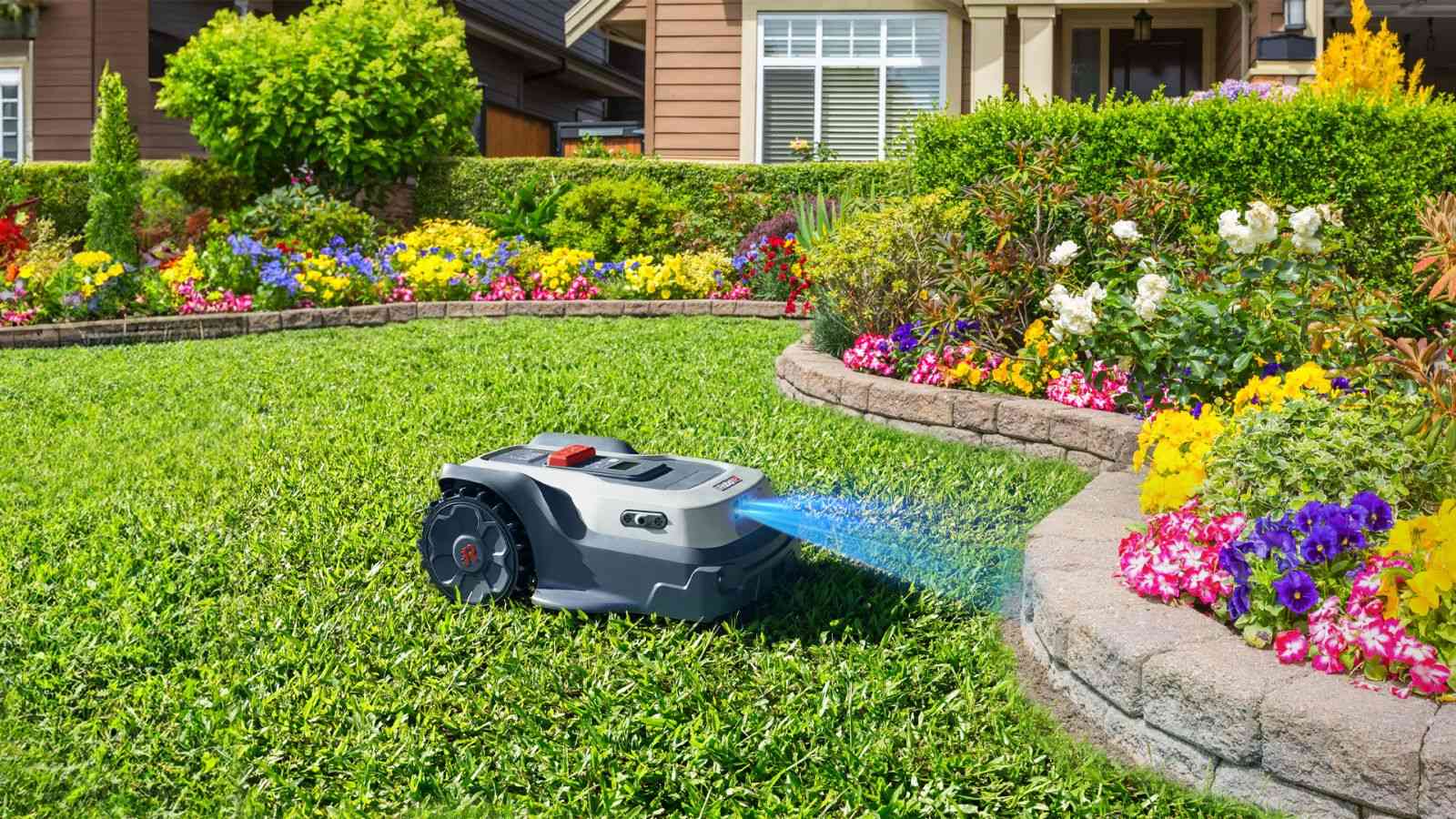Lawn Care Made Easy: A Guide to Mowing Small Spaces
RoboUP - 2024/07/10
Mowing a small lawn might seem like a simple task, but doing it correctly can make all the difference in maintaining a lush, green, and healthy lawn. In this comprehensive guide, we'll cover everything you need to know about mowing a small lawn, from understanding what constitutes a small lawn to the best practices for mowing, the tools required, and common mistakes to avoid.

What is a Small Lawn & How to Measure a Small Lawn?
A small lawn is typically defined as a residential lawn that spans less than 100 square meters. These lawns are often found in urban or suburban areas and usually require less time and effort to maintain compared to larger lawns.
Small lawns can come in various shapes and sizes, but they all share the common trait of being relatively easy to manage with the right approach. Despite their size, small lawns can be just as aesthetically pleasing, relaxation, picnics, or a patch of greenery in an outdoor space.

How to Measure a Small Lawn?
There are different ways to measure your small lawn. You can use online tools that are easy to use and provide accurate results by entering your yard's dimensions. Alternatively, you can measure your small lawn manually by using tools like measuring tapes and rulers to physically determine its size.
Use Online Tools to Measure a Small Lawn
Here are the step-by-step instructions to use online tools for measuring your yard.
1. Access Google Earth or Planimeter on your preferred device and enter the address or location of your small lawn into the search bar to begin.
2. Use the zoom function to focus on the specific area you want to measure.
3. Utilize the measuring tool provided by the software to outline the perimeter of your lawn, and trace along the edges for accurate measurements.
4. Once you have completed outlining the perimeter, the software will provide you with the total area of your lawn in square feet or meters.
Measure Your Small Lawn Manually
Here's a summary of the key steps to calculate the size of your small lawn accurately:
1. Divide your lawn into sections, such as rectangles or squares.
2. Measure the length and width of each section in feet using a tape measure.
3. Multiply the length by the width for each section to find the square footage.
4. Add up the square footage of each section to get the total square footage of the lawn.
For accurate measurements:
1. Use landmarks like corners or edges of the lawn as reference points.
2. Break down irregularly shaped areas into simpler shapes for easier measurement.
3. Take note of any obstacles or areas that may require adjustments in your calculations.
When to Start and Stop Cutting Grass in a Small Garden?
Timing is crucial when it comes to mowing your lawn. The best time to start mowing your small lawn is in early Spring, typically around the last week of February or the first week of March. By mowing the grass just before the weather gets warmer and keeping the mower blades high to trim the tops of the grass, you can encourage growth and help the grass become thicker. This practice also assists in preventing weeds and moss from taking over your lawn.
The best time to stop mowing your small yard as fall approaches depends on where you live and the type of grass you have. Typically, it's suggested to stop mowing after the first frost, but due to changing climates, there may still be growth after an early frost.
Jason McCausland, a technical coordinator at Weed Man, advises a simple rule: "Keep mowing if it's still growing." It's important to never cut more than one-third of the grass blade in a single mowing session.
How Often to Mow a Small Lawn?
The frequency of mowing your small lawn varies throughout the year, depending on the growing season. Different grass species thrive under specific conditions. Warm-season grasses like Bermuda and zoysia grow most in summer and are suited to warm summers and mild winters. Cool-season grasses such as Kentucky bluegrass and perennial ryegrass grow more in spring and fall.
Mowing too rarely can result in a messy-looking small lawn, while mowing too frequently can harm the grass. Striking a balance is key. During the growing season, grass typically needs more frequent mowing. A general rule is to mow once a week for a well-maintained small lawn. If you have alternative grass types like clover or prairie grass, you may need to mow less often.
When to Mow a New Small Lawn for the First Time?
Mowing a newly seeded lawn requires special attention. Mowing too early can damage the young grass in your small garden, which is still establishing its root system. Here are the key points to keep in mind:
1. Wait at least 2 weeks after installing the sod: Giving the sod time to establish strong root systems is crucial before mowing. Testing the sod's stability can help determine if it's ready for mowing.
2. Wait until the grass blades are about 3-4 inches: This typically takes about 6-8 weeks after planting, depending on the grass type and growing conditions.

Best Ways to Cut a Small Lawn for the First Time
When mowing a new small lawn for the first time, there are several key steps to follow to ensure you do not damage the young grass:
Sharp Blades: Ensure your mower blades are sharp to avoid tearing the young grass. Dull blades can shred the grass blades, making them more susceptible to disease and stress.
High Setting: Set your mower to the highest setting to avoid cutting too much grass at once. Cutting too low can stress the grass and hinder its growth.
Gentle Mowing: Mow gently and avoid making sharp turns to prevent damaging the new grass. Sharp turns can root young grass and create bare spots.
Dry Conditions: Mow when the grass is dry to prevent clumping and uneven cuts. Wet grass can be slippery, making it difficult to achieve a clean cut.
Steps for a Small Yard Mowing
Here is a simplified explanation of how to mow your small lawn in nine simple steps:
Step 1. Make sure the grass and soil are dry before mowing to avoid clogging the mower and causing damage to the lawn.
Step 2. Clear the lawn of any obstacles like furniture or stones that could interfere with the mowing process.
Step 3. Adjust the height of the mower blades to avoid cutting the grass too short.
Step 4. Start by mowing around the edges of the lawn to create a defined border.
Step 5. Mow in straight lines, overlapping each row slightly to ensure even coverage.
Step 6. Regularly empty the clippings box to prevent clumps on the lawn and help prevent fungal problems.
Step 7. Consider adding grass clippings to your compost heap for recycling.
Step 8. Tidy up the edges of the lawn for a neat finish using edging shears.
Step 9. Change the direction you mow every month to catch any missed areas and prevent wheel ruts.
Tools You Need for a Small Yard Mowing
Having the right tools can make mowing your small lawn more efficient and effective. Here are the essential tools you will need:
Lawn Mower: Preferably a robot lawn mower without perimeter wire, a push mower, or an electric mower for small lawns. These mowers are lightweight, easy to maneuver, and environmentally friendly.
String Trimmer: For trimming the edges and hard-to-reach areas that the lawn mower can't access.
Rake: To collect grass clippings and debris after mowing. This helps keep your lawn clean and prevents thatch buildup.
Lawn Shears: For detailed trimming around flower beds, trees, and other obstacles.

Which Lawn Mower is Best for a Small Yard?
Choosing the right lawn mower is essential for cutting grass in a small lawn. For small lawns, a robotic mower, a push mower or an electric mower is often the best choice. These mowers are easy to use and environmentally friendly. They are also quieter compared to gas-powered mowers, making them ideal for residential areas where noise can be a concern.
Robotic mower: A robotic mower is an excellent lawn mower for maintaining a small yard with ease and convenience. These automated machines offer a time-saving solution to keeping your grass well-trimmed without the need for manual labor. When considering a purchase, many homeowners also compare the lawn mower cost of robotic models versus traditional ones, often finding that the long-term savings in time and effort justify the initial price. The robotic mower operates quietly and efficiently, navigating around obstacles with precision to ensure even cutting throughout your lawn.
In today's market, there are many high-quality robotic mowers available to choose from. One such example is the RoboUP T1200 Pro, a top-of-the-line robot lawn mower for a small garden. Setting up this mower is a breeze as it creates virtual maps on its own, eliminating the need for boundary wires. Equipped with advanced AI vision and ultrasonic sensors, the T1200 Pro can navigate around obstacles with accuracy. Additionally, its strategic planning function automatically sets cutting schedules and patterns based on your lawn's layout.

With programmable settings and the ability to work autonomously, you can sit back and relax while the robot takes care of the mowing tasks for you. Enjoy a neatly manicured lawn without the hassle of traditional lawn mowing.
Push Mowers: Manual push mowers are a great lawn mower option for small lawns. They are eco-friendly, as they do not require fuel or electricity, and they provide a good workout. However, they may require more effort to use, especially on uneven terrain.
Electric Mowers: Electric mowers, both corded and cordless, offer a balance between convenience and environmental friendliness. Corded mowers provide continuous power but require access to an electrical outlet, while cordless mowers offer more mobility but need to be recharged.
How Long Does It Take to Mow a Small Lawn?
The time it takes to mow a small lawn typically ranges from 20-30 minutes, depending on the size of the lawn and the type of mower used. Push mowers may take a bit longer due to the manual effort required, while robotic and electric mowers can be more efficient, especially a robotic mower can mow your small lawn autonomously. Adding edging and trimming might take additional time, but it’s essential for a well-maintained appearance.
Common Mistakes When Mowing a Small Lawn
Even small lawns can suffer from common mowing mistakes that can affect their health and appearance. Here are some common mistakes to avoid:
Cutting the grass too short can stress the grass and lead to poor growth. Aim to cut no more than one-third of the grass blade length at a time.
Using Dull Mower Blades: Dull blades can tear the grass, making it more susceptible to disease. Sharpen your mower blades regularly to ensure a clean cut.
Mowing in the Same Direction: Vary the mowing pattern to prevent soil compaction and the creation of ruts. Alternating the direction also encourages more even growth.
Mowing Wet Grass: Wet grass can clog your mower and leave uneven cuts. Wait until the grass is dry to achieve the best results.
Ignoring the Edges: Ensure to trim the edges for a neat and well-maintained look. Neglecting the edges can make the lawn look unkempt.
By following these guidelines and avoiding common mistakes, you can keep your small lawn looking lush and healthy throughout the growing season. Regular maintenance and attention to detail will ensure that your lawn remains a beautiful and enjoyable part of your home.
Conclusion
Mowing a small lawn can be a rewarding experience that offers the pleasure of gardening on a more intimate scale. Taking the time to care for and maintain a small lawn allows you to connect with nature, experience the therapeutic benefits of being outdoors, and witness the tangible results of your efforts. By following the tips and guidance outlined in this blog, you can ensure that your lawn remains healthy, lush, and well-manicured throughout the year.
10 Lawn Mowing Tips for a Healthy and Lush Lawn Top 7 Lawn Mowers Perfect for Large Lawns in 2024

















